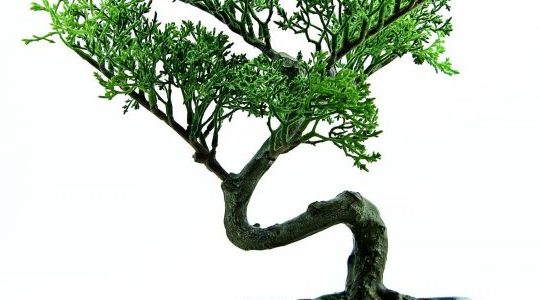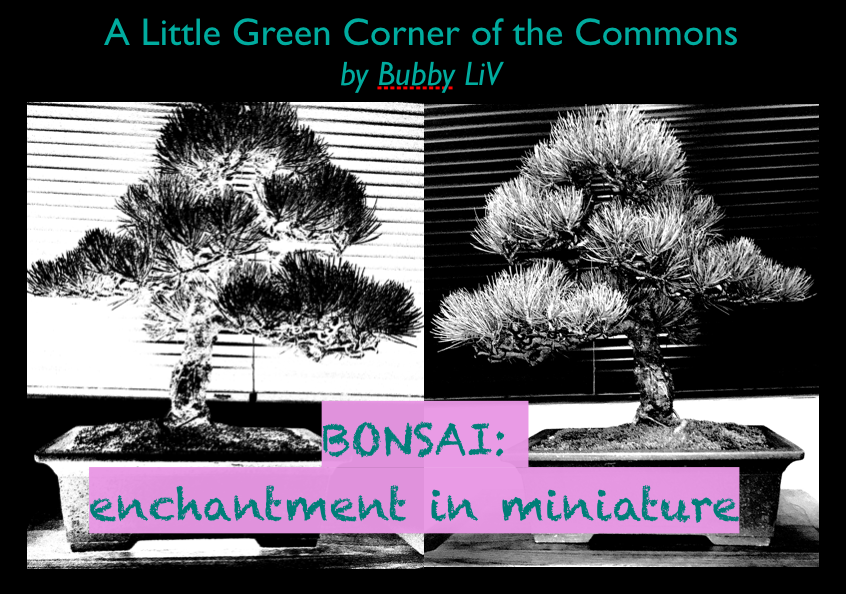
Not that a new pastime was needed in my life, but this summer I was bitten by the bonsai bug. The new-to-me world of bonsai has a wealth of riches: Asian philosophy and art; loads of gorgeous and intelligent source books (with pictures!); passionately geeky aficionados (bonsai niwashi in Japanese) who are happy to share their expertise; and the certainty that I will never run out of new things to learn.
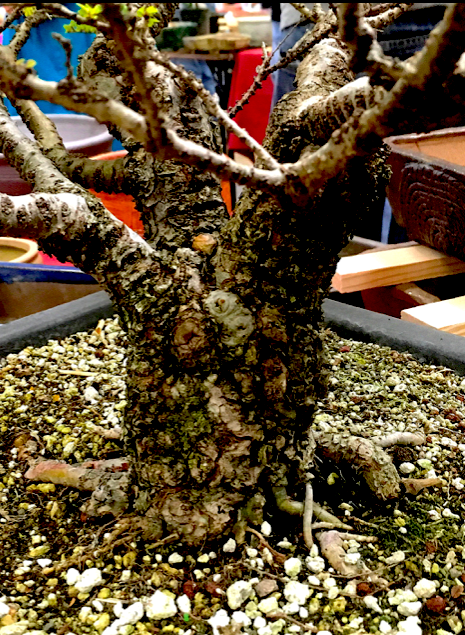
Without a guide I might have been too hesitant to take the plunge, having in my callow youth killed more than one poor bonsai tree. Fortunately, a mentor has fallen into my world. It was the veritable forest of tiny trees surrounding Barbara’s residence which first got my attention and sparked our conversation. Her friendliness and willingness to explain and begin teaching on the spot came as a happy surprise; I have since discovered that many bonsai folks love to talk about their craft and are generous with information. The pride taken by bonsai niwashi (bonsai growers) in their “children” reflects the commitment and devotion involved; successfully raising bonsai is neither casual nor sporadic. Many bonsai niwashi spend time daily with their plants; if we love what we put our attention on, then these are arguably some of the dearest plants in existence.
I wanted to know how and when Barbara became a bonsai owner; she explained that at twelve she spotted her first bonsai tree in an insignificant, tucked-away booth at a flower show in Albany, New York. Her artist’s soul was instantly captivated by the aspect of great age magically embodied in such a small package. That first imprinting proved indelible; as an adult she began collecting bonsai trees and has belonged to the Bonsai Society of Portland (BSOP) for two decades, currently serving as librarian. At BSOP’s recent Bonsai Jamboree in Portland, Barbara took me on a guided tour through the gallery of exhibits to introduce terminology and point out features I might easily have missed. To enter the world of bonsai is to begin to train one’s eye, and this show beckoned from every corner with its stunning specimens, handcrafted clay pots and cunning little tools, the proceedings underlain with a contented, purposeful hum. During the show Barbara demonstrated transformation of a cotoneaster from nursery shrub to bonsai-just-begun, an undertaking reminiscent of Michelangelo: I saw the angel in the marble and carved until I set him free. Bonsai pruning is a pint-sized version of regular garden pruning which uses many of the same techniques with modifications like special concave cutters. This tool removes branches by making indented cuts which eventually fill in with tissue, thereby avoiding scarring.
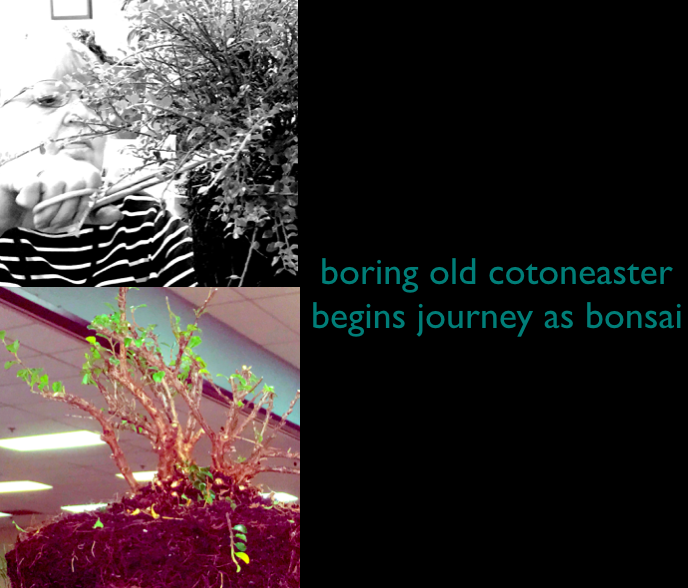
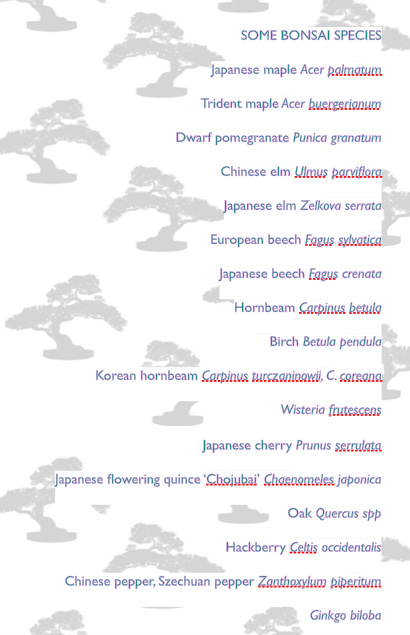
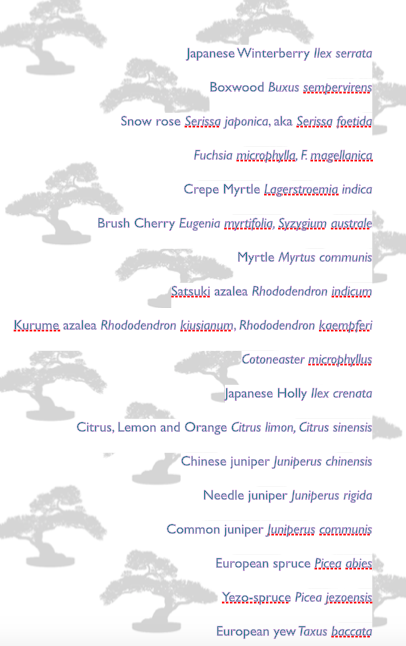
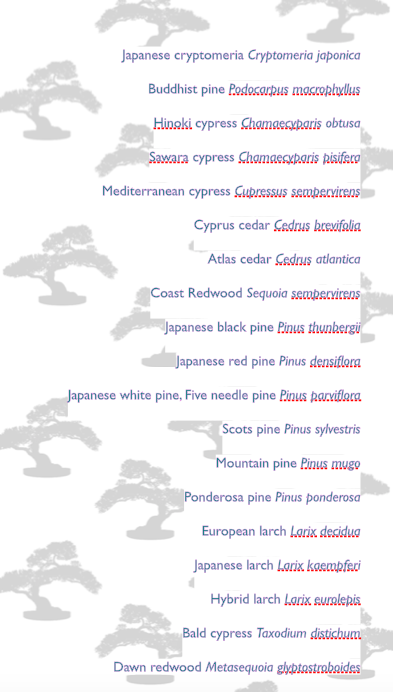
Shortly after the jamboree I accompanied Barbara to a BSOP meeting, where the atmosphere was just as friendly as at the show and bonsai wisdom was only a question away. These monthly meetings are mini-versions of a show, with vendors, raffle, silent auction, plants on exhibit (who knew a snowberry could be bonsai-ed?!), and plenty of time and space for members to work on the plants they’ve brought along. Socializing is ever so much easier when one’s hands are engaged in a task! 🤓
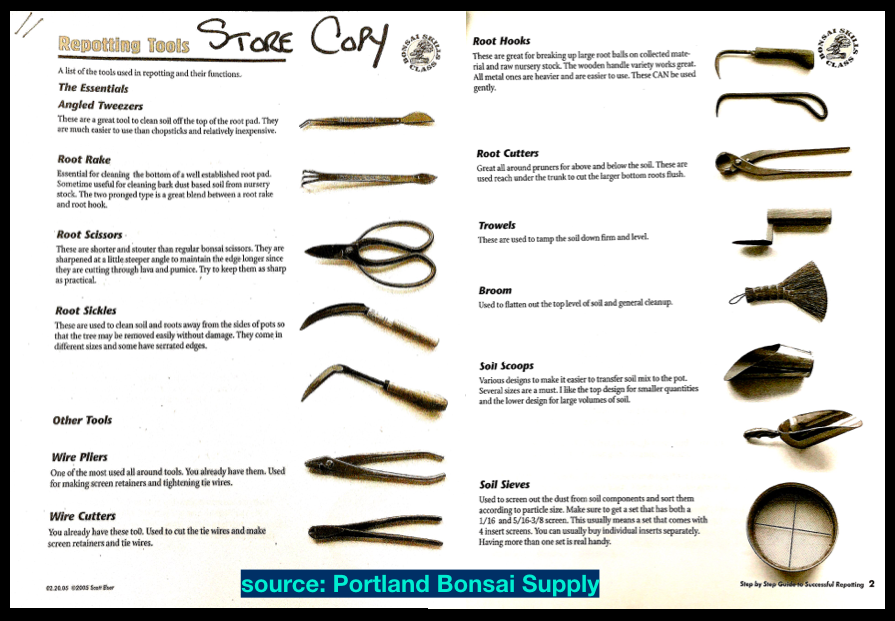
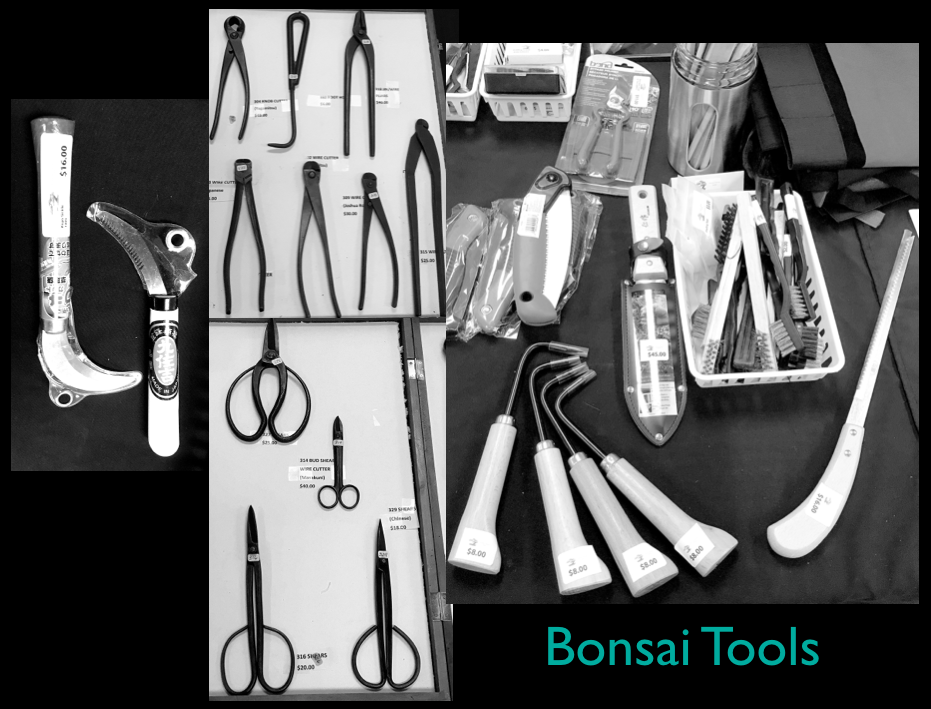
Given that the interwebs abound in superb bonsai websites I’ll not re-invent the wheel, choosing rather to share my newbie-wonderment in all its chaotic glory.
If you are looking for how-to information, skip to the end of this post for a smattering of sources or use your fave search engine; better yet, if you are so fortunate as to have a local bonsai club, go to a show or meeting. Hang around and ogle the plants (hands in pockets, please!), ask a thoughtful question or two and if you find you need to know more, start in reading.
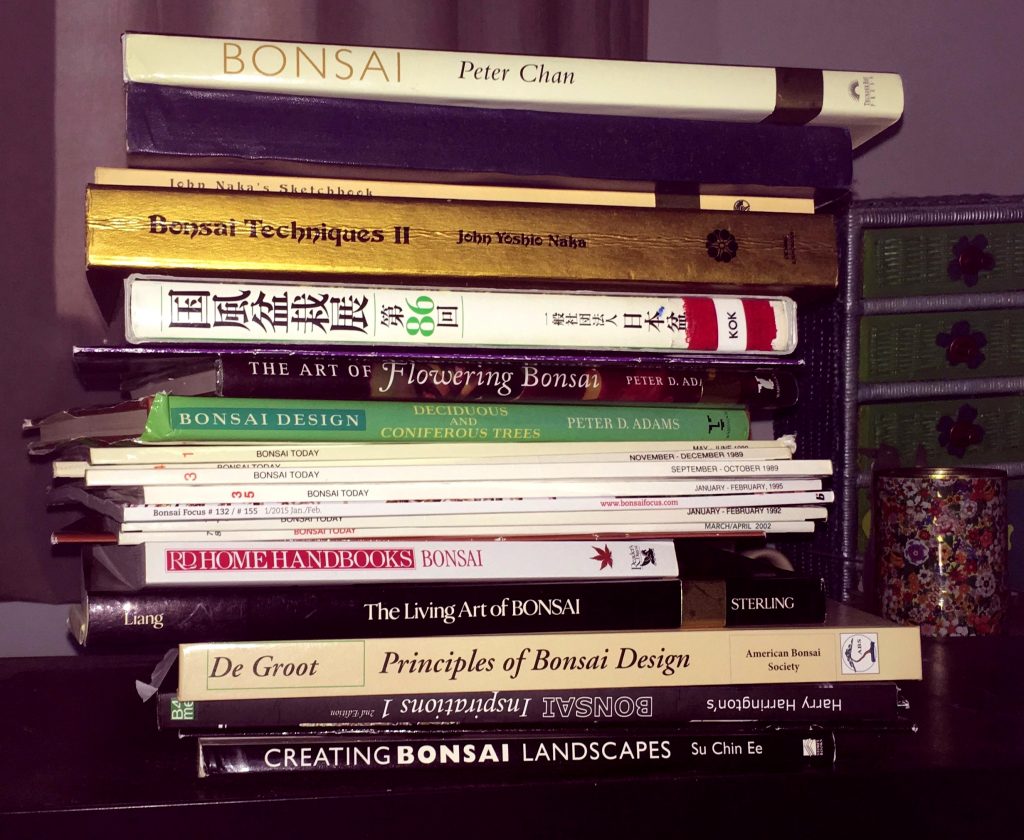
- Bonsai plants have a front, or central focal point which is chosen and developed over time, in many cases years or even decades.
- In theory nearly any plant can be coaxed into the bonsai form so long as it has a woody trunk and bears leaves that are small or will reduce in size.
- Penjing is the ancestor of bonsai, being a Chinese word for miniature landscapes which include rocks and miniature figures.
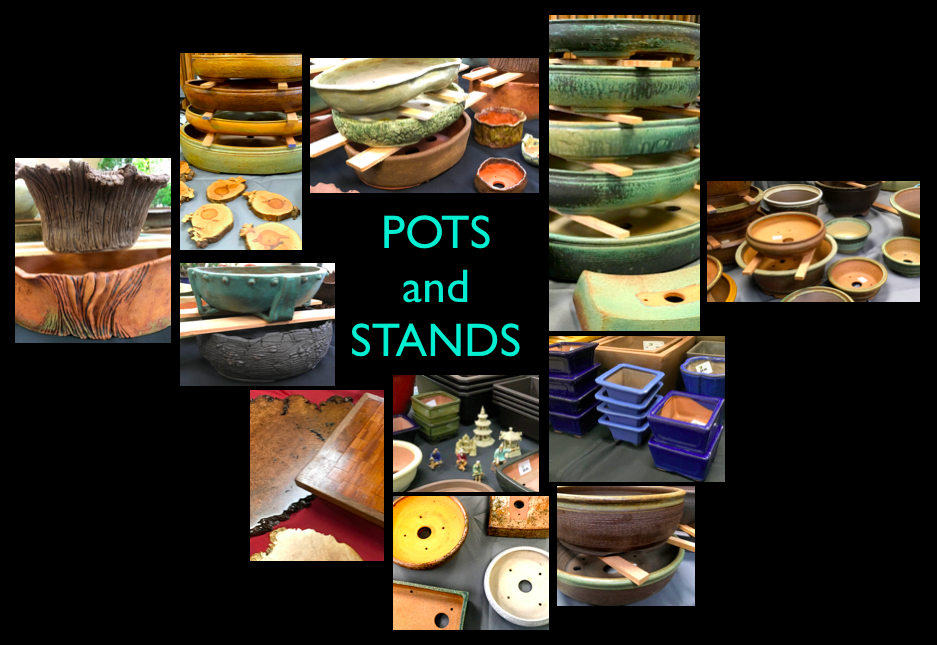
- Over time the art of bonsai has become less abstract; early in its history there was more interest in forms which called to mind the shapes of animals.
- Hòn non bô is a Vietnamese miniature landscape made of rocks, plants and water- these can be anywhere from 1-25’ high and are placed permanently
- Mai-dăt is a Thai version of bonsai resembling figures and poses from dance.
- The Japanese art of suiseki involves selection and display of unique, unaltered stones.
- Ikebana is flower arranging according to guidelines based on philosophical beliefs about human connections with nature.
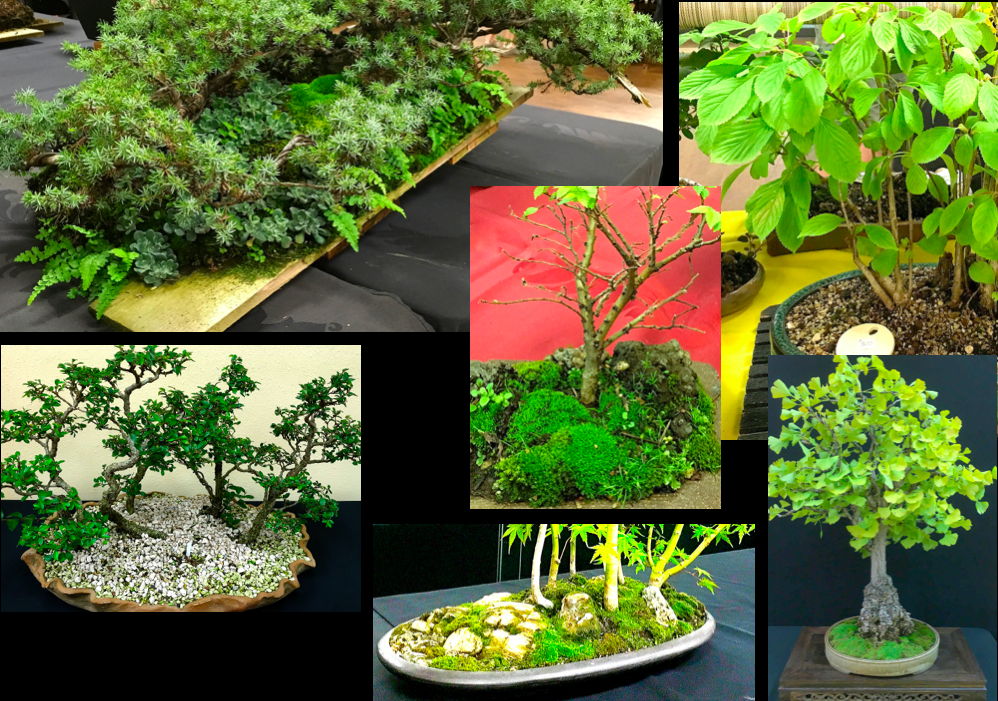
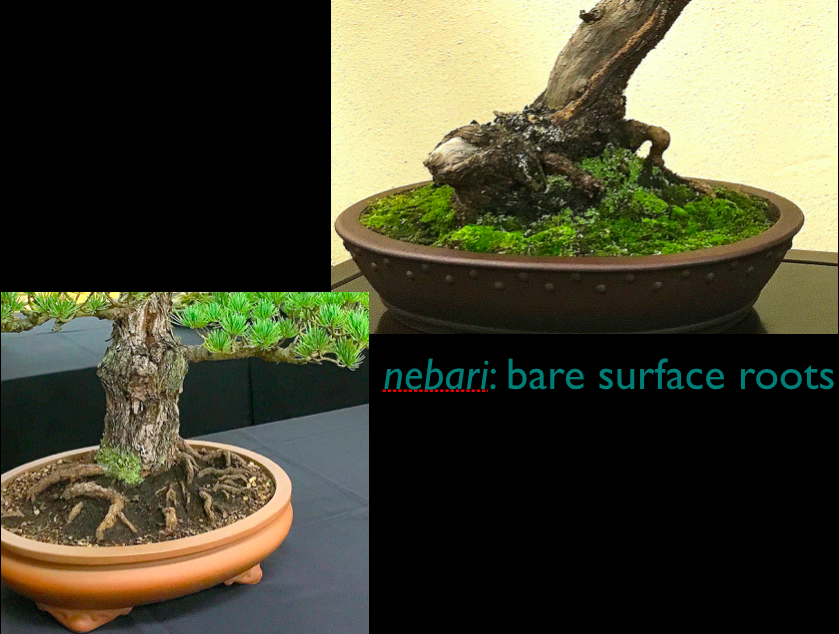
- Each of the classical bonsai forms has a Japanese name and recognizable structure.
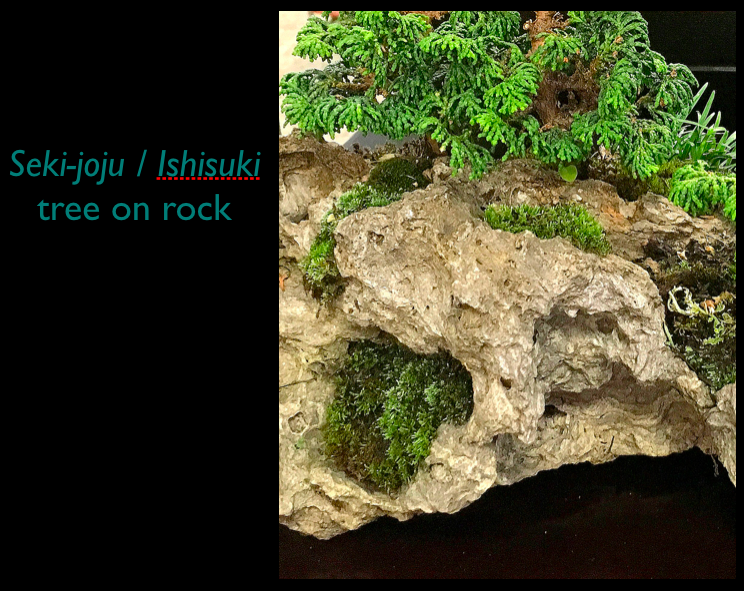
- The general sequence of creating bonsai goes like this:
- Selecting a plant;
- Growing the plant to suitable girth in a pot with lots of space and aeration for roots;
- Trimming, beginning with choosing a front and deciding on a general shape, which is then followed by many iterations of pruning;
- Training using wire, raffia or other suitable material;
- Re-potting in a smaller container to cause stunting; and
- Ongoing care.
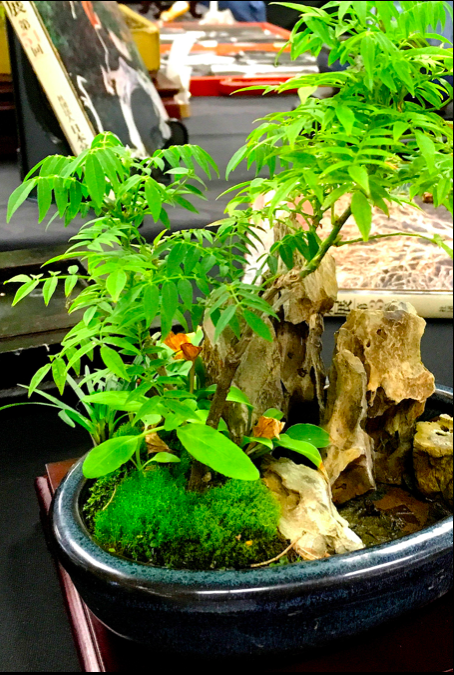
- The one rule for watering bonsai is that there is no one rule for watering bonsai. A plant’s water needs depend on season, weather, species, size of container and so on. As I have learned (and still feel guilty about) compost is the technical term for bonsai whose roots have been allowed to dry out.
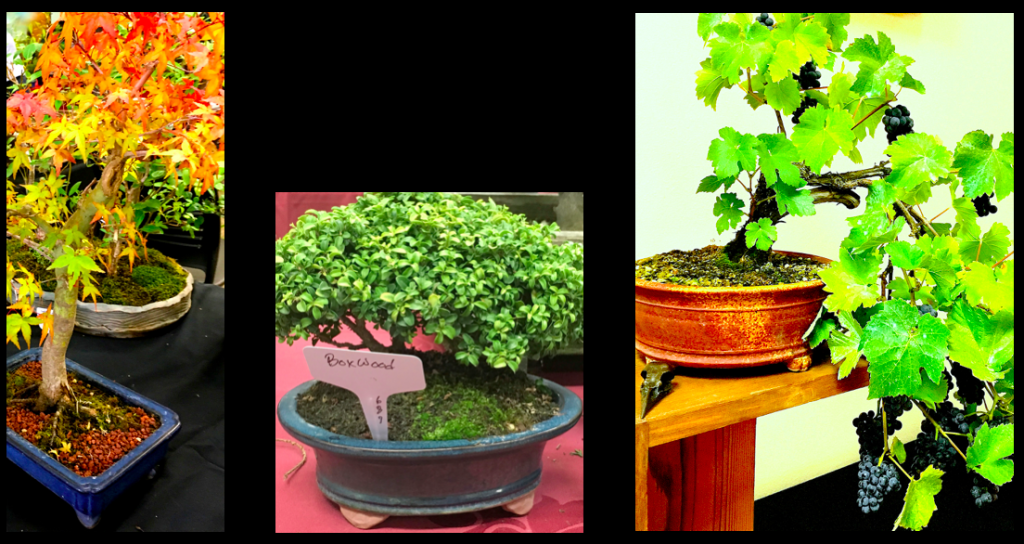
- A rather staggering number of things have to go right for a bonsai plant to be successful: symmetry/asymmetry; shape; color; texture of plant and container; position within the pot; sense of motion/rhythm; focal point; preservation of basic tree form; contrast and complementarity of living and non-living materials; correct proportion among parts of the plant and between plant/pot/platform; open space between branches; the effect of unity through consistency and elimination of extraneous parts; and correct technique (precision of pruning and wiring, overall plant health, miniaturization of leaves).
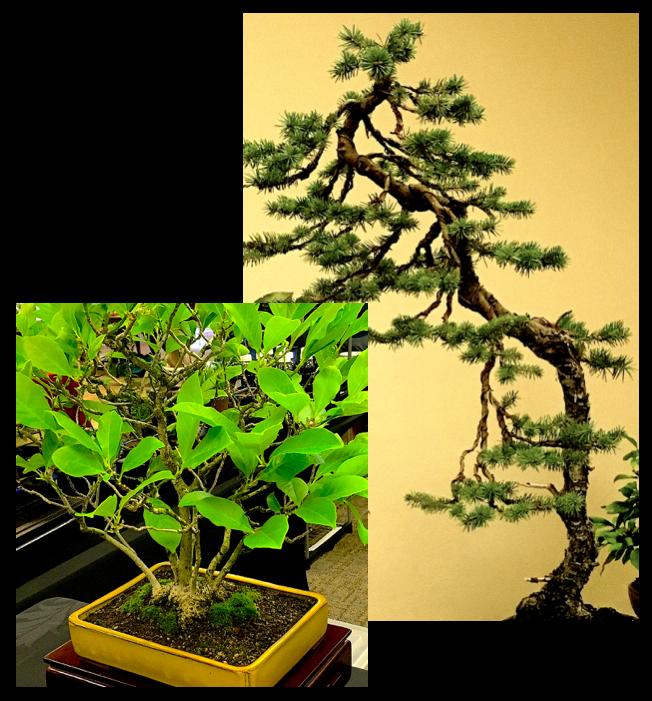
Here you can find individualized care guides for many species of bonsai.
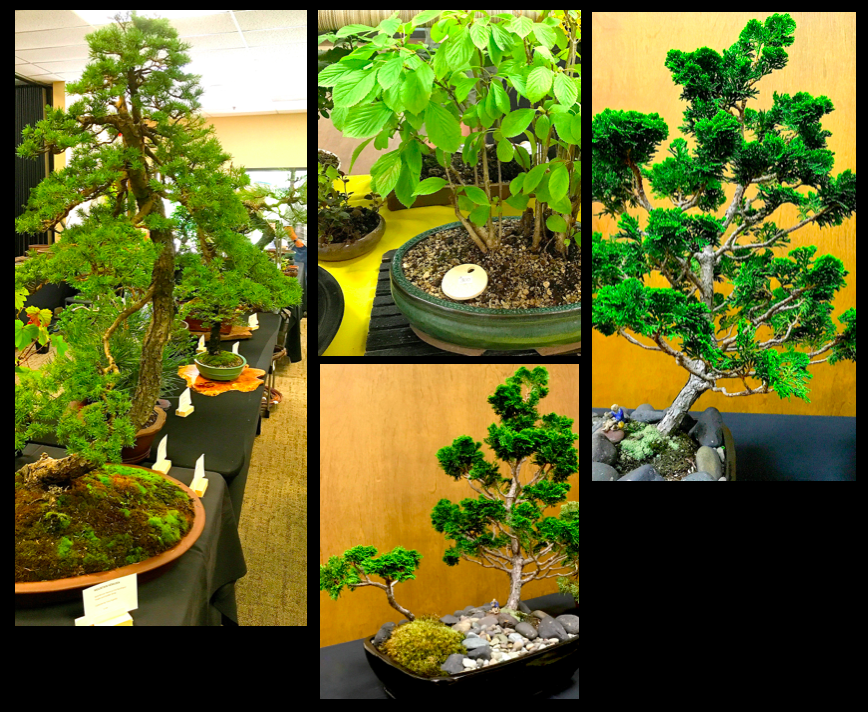
Bonsai plants are NOT grown in standard garden soil. A blend of components is customized for each particular tree, and contains:
Akadama – consists of clay balls which maximize ion exchange and oxygen supply to roots for maximum growth and strength; it is pre-heat sterilized and holds moisture without becoming waterlogged
Lava (red or black) – volcanic soil available in different particle sizes chosen for desired drainage traits
Pumice – light-colored, lightweight, porous volcanic rock
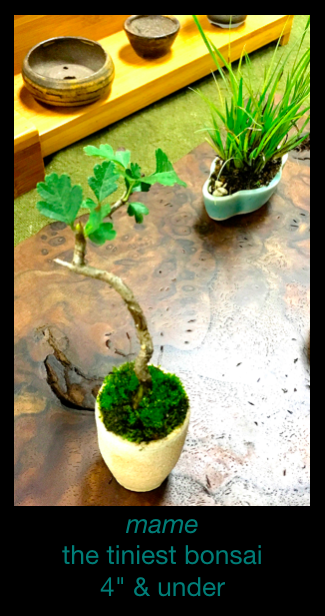
Special challenges for bonsai:
😟 lack of frost hardiness
😟 over- and under-watering
😟 limited nutrient availability
😟 attack by bugs, fungi, bacteria
😟 sensitivity to heat, wind
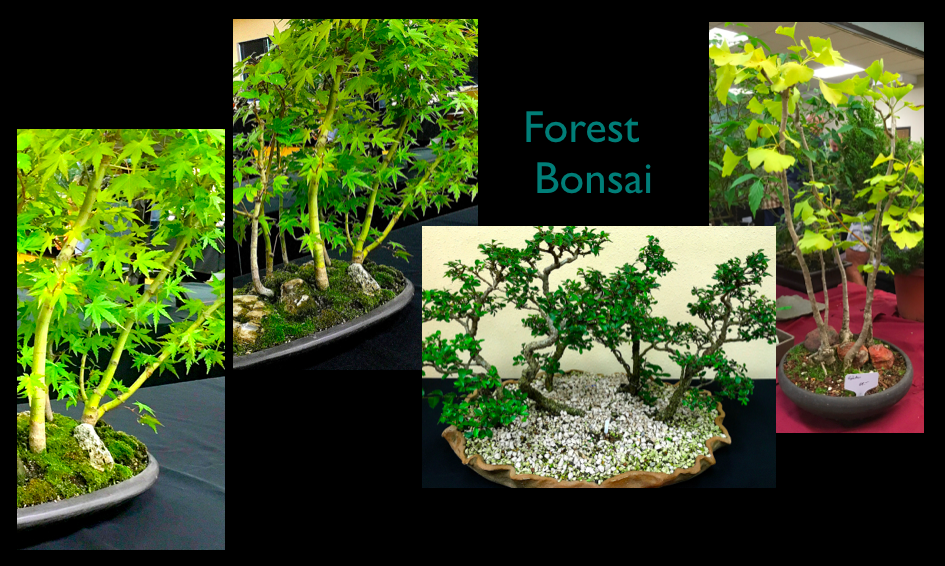
A BY-NO-MEANS COMPREHENSIVE LIST OF INTERWEB BONSAI RESOURCES:
- Garland Nursery
- Bonsai Society of Portland
- Principles of Bonsai Design – David de Groot
- Bonsai Focus Magazine (merger of former Bonsai Today & Bonsai Europe publications) – 2010 and later available as digital files
- bonsaiakira.com
- earthwares: bonsai & kusamomo containers
- PortlandBonsaiSupply.com
- tokutakebonsai.com
- River Rock Nursery
- Kokufu Bonsai Ten, the National Bonsai Exhibition
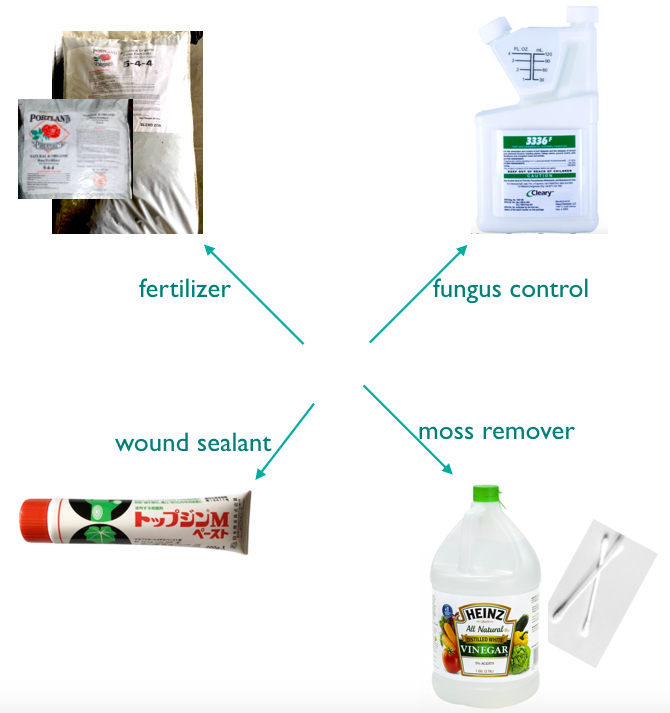
Words from the honorable bonsai cultivator John Naka:
The object is not to make the tree look like a bonsai, but to make the bonsai look like a tree.
Listen to the tree; it tells you where it wants to go!
The bonsai is not you working on the tree; you have to have the tree work on you


